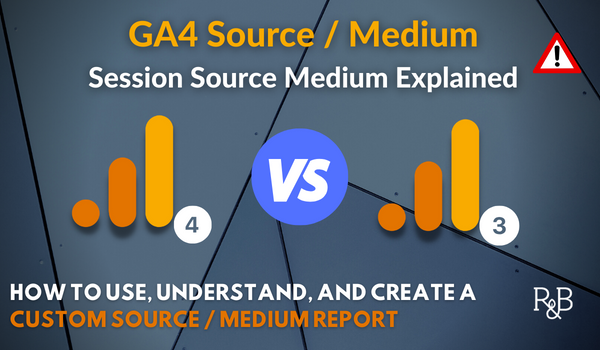Understanding Secondary Dimensions in Google Analytics: Definition and Calculated Integration
Understanding Secondary Dimensions in Google Analytics: Definition and Calculated Integration
Blog Article
Unveiling the Impact of Second Measurement in Google Analytics on Data Analysis and Insights
In the world of data analytics, the application of secondary dimensions within Google Analytics has actually arised as an essential tool for removing much deeper insights and unraveling complicated patterns that might otherwise continue to be covered. By peeling back the layers of primary data collections, secondary measurements use a nuanced perspective that enriches the understanding of customer actions, internet site performance, and the performance of marketing strategies.
Discovering the Principle of Secondary Dimensions
Additional measurements in Google Analytics supply additional understandings by allowing individuals to evaluate primary data in combination with a secondary feature. By integrating second measurements, individuals can delve much deeper into the information and uncover useful correlations that could or else go undetected - what is a secondary dimension in google analytics.
Understanding the concept of second measurements is critical for taking full advantage of the potential of Google Analytics. It enables users to section data efficiently, identify patterns, and make informed decisions based upon a much more complete photo of their analytics information. By discovering the numerous additional measurements readily available in Google Analytics, customers can open brand-new understandings and maximize their electronic marketing initiatives. Essentially, second dimensions act as a powerful device for enhancing data analysis and driving workable outcomes.
Enhancing Data Analysis With Additional Dimensions
Having actually developed the foundational understanding of secondary dimensions in Google Analytics and their essential duty in data analysis, the emphasis now shifts towards leveraging these second credit to enhance the analysis of analytics information (what is a secondary dimension in google analytics). By incorporating secondary dimensions right into information evaluation, analysts can acquire much deeper insights right into user habits, internet site efficiency, and marketing efficiency

Additionally, additional measurements assist in contextualizing primary information metrics by supplying additional layers of information. This contextualization help in recognizing the 'why' behind the data trends, aiding experts make notified optimizations and decisions to boost total efficiency. Ultimately, including second measurements enhances the data analysis procedure, bring about even more calculated actions and significant understandings.
Revealing Hidden Insights Through Additional Measurements
Exploring the midsts of analytics information with additional measurements exposes valuable understandings that would otherwise remain obscured. By integrating second measurements in Google Analytics, businesses can discover surprise patterns, fads, and connections that supply an even more comprehensive understanding of user actions and web site efficiency. These added layers of information permit analysts to delve much deeper right into the key measurements, such as traffic resources or touchdown pages, and obtain a more nuanced viewpoint on just how various variables engage with each various other.
With making use of secondary measurements, experts can section and compare data throughout numerous measurements, enabling them look at here now to identify details variables that affect user involvement, conversion prices, and total success metrics. For instance, by pairing the key measurement of 'device category' with the additional dimension of 'age team,' online marketers can determine which age demographics favor accessing the site with smart phones versus desktop computers. This degree of granularity equips services to make data-driven choices and enhance their strategies for far better results. Ultimately, uncovering surprise understandings through secondary measurements enhances the deepness and accuracy of data analysis, causing even more educated decision-making and enhanced efficiency outcomes.
Leveraging Secondary Dimensions for Actionable Analytics
Building upon the insights introduced with secondary measurements in Google Analytics, companies can currently harness this enriched data landscape to drive actionable analytics and critical decision-making. By leveraging additional dimensions, companies can dig much deeper into their information to draw out important patterns, patterns, and connections that might have previously gone undetected. This much deeper level of analysis makes it possible for companies to gain an extra extensive understanding of customer Source habits, campaign efficiency, and overall internet site effectiveness.
One trick benefit of using secondary dimensions for workable analytics is the capability to segment data based upon particular criteria. This segmentation enables companies to tailor their campaigns and methods to different audience groups, resulting in more targeted and reliable advertising initiatives - what is a secondary dimension in google analytics. In addition, secondary dimensions provide a more all natural view of customer communications, enabling organizations to maximize their internet site material, design, and total customer experience
Optimizing Decision-Making With Additional Measurements
To enhance strategic decision-making in analytics, leveraging additional measurements in Google Analytics can supply an extra nuanced perspective on user actions and campaign efficiency. By incorporating second measurements right into data analysis, organizations can dig much deeper right into the specifics of their website visitors' interactions and involvement patterns. This additional layer of details permits an extra thorough understanding of just how various variables, such as demographics, devices, or traffic resources, effect vital performance indicators.

Verdict
Finally, the use of additional measurements in Google Analytics plays an important function in improving information analysis and revealing surprise insights. By discovering this concept, one can acquire a read the full info here much deeper understanding of customer actions and make informed choices based upon actionable analytics. Leveraging second dimensions enables an extra detailed interpretation of information and optimizes the efficiency of decision-making procedures.

Report this page